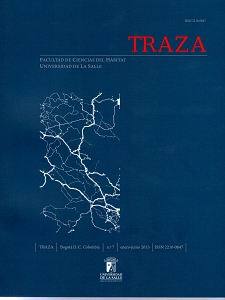Abstract
This paper is the result of the insights obtained from the monographic research of the seminar on Complex Form Generation, as part of her current doctoral studies at the School of Architecture, Design and Urbanism at the University of Buenos Aires. Considering that the central point of the thesis focuses on the study of the viability of preserving immovable heritage in the context of current urban development dynamics: impact of the assessment on this relation, the scopes of the monographic work on the abovementioned seminar made it possible to examine the role played by graphic representation in the history of heritage conservation. The evolution of the concepts of immovable heritage and the evolution of graphical representation media in this dynamic of conceptualization are related, showing how what is being evaluated is represented and how, at the same time, this representation affects the assessment. Finally, a discussion is opened about the current role of inographic media representation on immovable heritage assessment, as they open new axiological and immovable heritage management possibilities.Downloads
Download data is not yet available.



